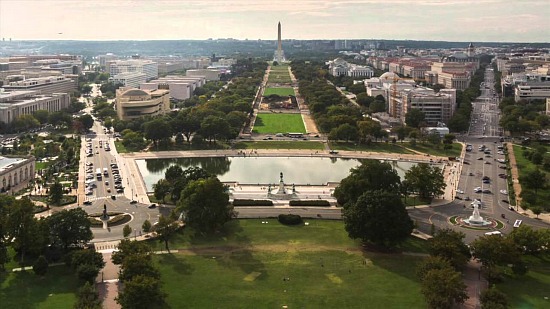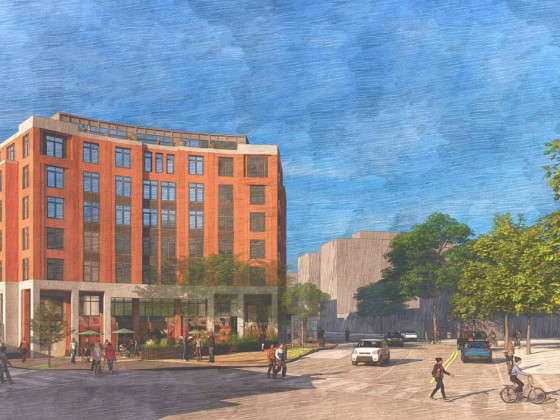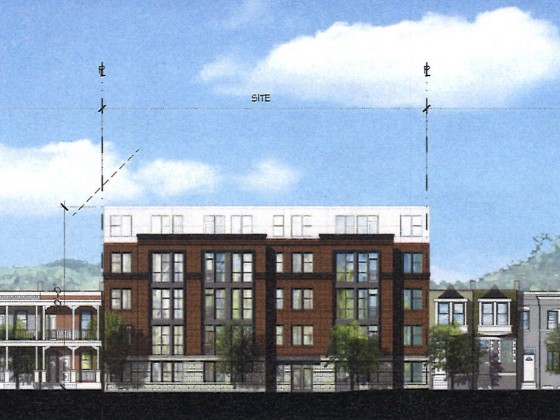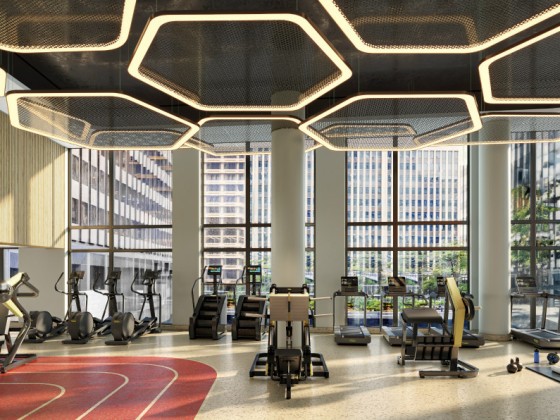What's Hot: The 4 Projects in the Works Near DC's Starburst Intersection | A 153-Room Aloft Hotel Pitched For Mt. Vernon Triangle
 Affordable Housing and Solar Panels: The Latest on DC's New Penthouse Rules
Affordable Housing and Solar Panels: The Latest on DC's New Penthouse Rules

In mid-May, Congress passed an amendment to the Height Act intended to give developers a way to squeeze residences onto D.C. rooftops, currently occupied solely by mechanical penthouses, the large, gray metal boxes that dot the city’s skyline. Under the amendment, the new penthouse units could rise 20 feet above the limit mandated by the Act.
But the tweaked law still needs to be integrated with D.C.‘s current regulations, a balancing act between the Office of Planning, which proposes the regulations, and the Zoning Commission, which ultimately approves or denies them. At a zoning hearing Thursday night, tension points were evident, the most prominent of which relate to ongoing problems related to density and affordable housing in the city.
A couple members of the Zoning Commission are pushing for an agreement that would force developers to contribute more than the usual amount of affordable housing when constructing a penthouse. The tighter regulations spurred several developers to show up at Thursday’s meeting and lobby to have the existing inclusionary zoning measures applied to the penthouses.
Monty Hoffman, the chief executive of PN Hoffman and the primary developer of the Wharf redevelopment along the Southwest Waterfront, said he agreed with the Office of Planning’s proposal to apply current inclusionary zoning measures to the construction of penthouses. That means that for a certain amount of housing constructed, developers would have to build affordable housing or contribute a certain amount to an affordable housing fund. Planning said the measures would take into account the higher value of penthouses in calculating the total contribution required of the developer.
The Office of Planning’s proposal, Hoffman said, “strikes a balance between the goal of directly producing and allowing incentive. To state the obvious, without incentive, there is no penthouse buildout and nothing gets accomplished.” Hoffman pointed out that penthouses, though lucrative to sell or rent, were usually particularly tricky to construct because they don’t align with the rest of the building’s stacked kitchens, bathrooms, and other utilities, and they have to be properly separated from smelly venting routed to the roof.
Commissioner Marcie Cohen argued for tougher measures related to the creation affordable housing, noting that the city was in a “crisis situation.” Planning’s Joel Lawson, who presented the report on the new regulations, told the Commission that the penthouses were “probably not the solution to the affordable housing problem in the District.”
Other issues of concern included how penthouses would work in lower-density zones and how solar panels fit into the proposed regulations. Commissioner Peter May has argued that nothing should go above the penthouse limit, including solar panels. Planning responded by presenting several ways solar panels might fit into the new regulations, including partly screening solar panels or allowing flat solar panels atop the penthouses. Many of these proposed provisions, some of which would lessen the panels’ effectiveness, were staunchly opposed by solar panel users, who showed up at the meeting to voice their concern.
Thursday’s meeting wasn’t the last word on the penthouse change. The Commission scheduled another meeting for December.
See other articles related to: dc height act, dc penthouse rules, height act, penthouse, penthouses
This article originally published at https://dc.urbanturf.com/articles/blog/on_new_penthouse_rules_fights_emerge_over_affordable_housing_density_and_so/9198.
Most Popular... This Week • Last 30 Days • Ever

In this article, UrbanTurf looks at the estimated annual maintenance costs associated... read »

Another concept has been unveiled for one of DC's most contentious development sites,... read »

The residential development in the works along Florida Avenue NE is looking to increa... read »

Renter demand has continued to push Class A apartment rents in the DC region up this ... read »

The big news in the development pipeline east of DC's H Street Corridor is the resur... read »
- What Are the Annual Maintenance Costs When You Own a Home?
- A First Look At The New Plans For Adams Morgan's SunTrust Plaza
- 46 to 48: The Biggest Project In Trinidad Looks To Get Bigger
- How Much Did DC-Area Rents Rise At The Beginning of 2024?
- The 4 Projects In The Works Near DC's Starburst Intersection
DC Real Estate Guides
Short guides to navigating the DC-area real estate market
We've collected all our helpful guides for buying, selling and renting in and around Washington, DC in one place. Start browsing below!
First-Timer Primers
Intro guides for first-time home buyers
Unique Spaces
Awesome and unusual real estate from across the DC Metro














